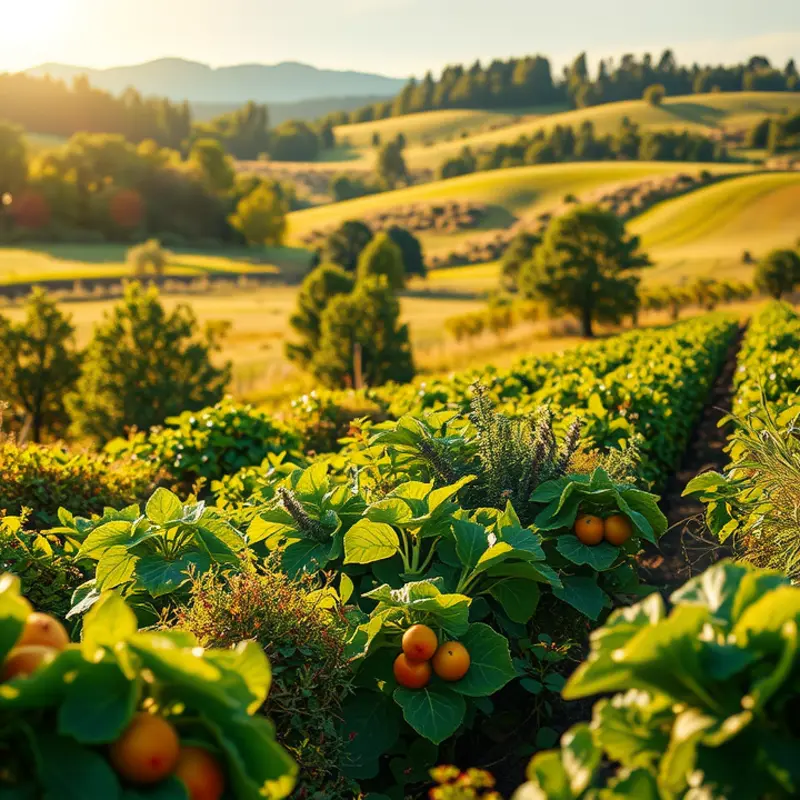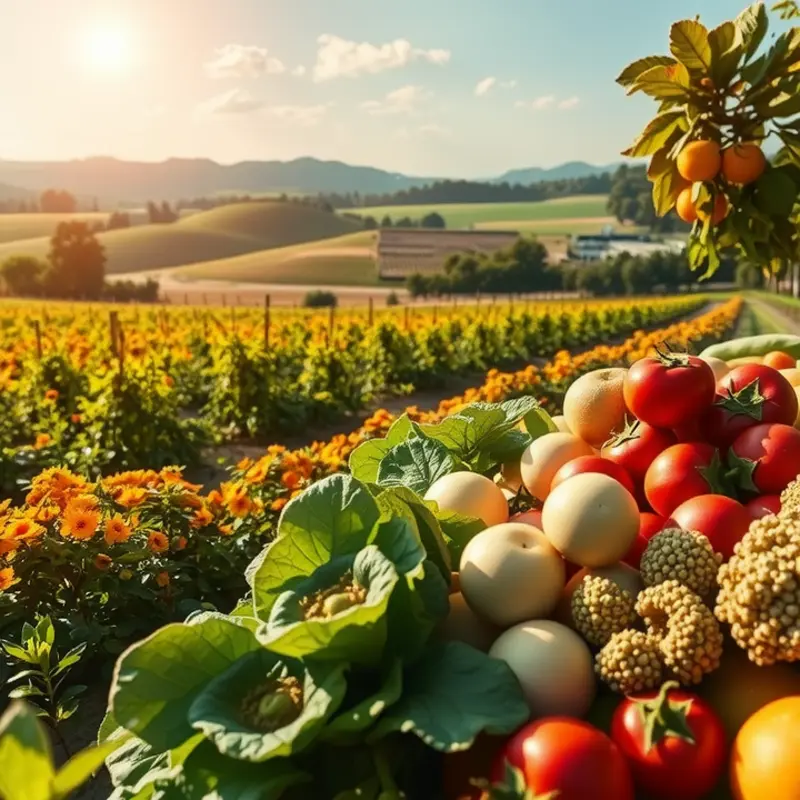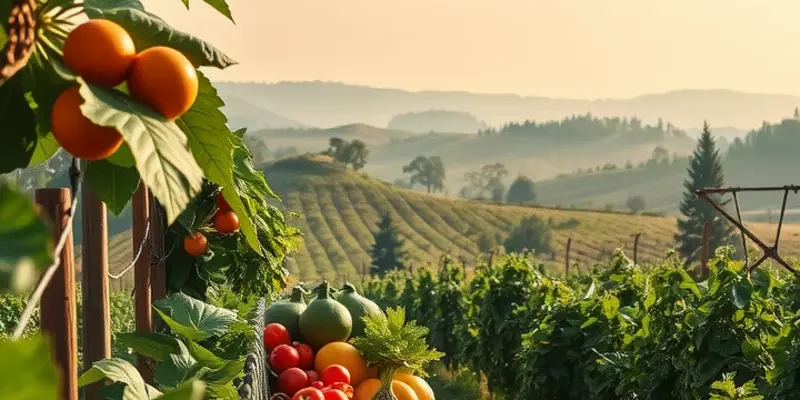Eating is an essential part of daily life, but the choices we make about our food have far-reaching implications. Opting for eco-conscious culinary choices not only fosters personal well-being but also nurtures the environment. As we navigate through this culinary landscape, embracing sustainable practices can minimize our carbon footprint, support local economies, and contribute to the preservation of biodiversity. Whether you’re cooking at home or dining out, every bite can make a difference. Let’s explore actionable strategies to integrate eco-friendly eating habits into our routines, enhancing both our health and the planet’s vitality.
Conscious Sourcing: The Power of Local and Seasonal Foods

Choosing local and seasonal foods isn’t just a feel-good trend; it’s a potent strategy for reducing your carbon footprint and enriching your diet. When you opt for local produce, you minimize carbon emissions generated from transportation, as these foods don’t have to travel long distances to reach your table. Supporting local farmers not only boosts the regional economy but also strengthens community bonds. Farmers’ markets become vibrant hubs where consumers and producers interact, sharing insights and inspirations.
One key benefit of purchasing from local farmers’ markets is freshness. Produce harvested at its peak retains more nutrients and flavors. When expanding your eco-conscious efforts, consider joining Community Supported Agriculture (CSA) programs, where you invest in a share of a farmer’s harvest. This approach ensures you receive regular boxes of varied, seasonal crops, while providing a stable income for farmers, allowing them to plan and optimize their resources sustainably.
Growing your own herbs and vegetables can significantly contribute to a more sustainable lifestyle. Even if only a window box, homegrown produce gives you control over the growing conditions, eliminating pesticides and excessive water usage. Moreover, gardening encourages a deeper appreciation of food production cycles.
Identifying and choosing seasonal produce requires a bit of local research. For example, in northern regions, spring is ideal for asparagus and spinach, while southern locales might see early peaches and zucchini. Many online resources provide detailed guides according to specific areas, aiding your quest for seasonal richness.
Incorporating these fresh ingredients into your meals can be both simple and creative. Start with easy swaps like using local greens in your salads or substituting imported fruits with locally abundant berries. Embrace culinary experimentation, creating dishes that blend seasonal vegetables with everyday staples—such as roasted root vegetable bowls in winter, or zucchini pastas during summer.
For inspiration on integrating fresh, local foods into your cooking routine, consider the practices discussed in Minimal Prep Dinner Ideas. These strategies highlight the ease of preparing delicious, nourishing meals without the need for complex preparation.
Ultimately, conscious sourcing underscores a broader lifestyle commitment to planetary health. By choosing to eat with the seasons and sourcing locally, you contribute to a resilient food system that respects natural cycles, supports regional economies, and leads humanity toward a more sustainable future.
Mindful Meal Preparation: Reducing Waste and Enhancing Nutrition

Embarking on a journey toward eco-friendly eating involves embracing a holistic approach to meal preparation that minimizes waste and maximizes nutrition. By cultivating a mindful attitude in the kitchen, you can contribute to a healthier planet while also enhancing your personal well-being.
Start by engaging in thoughtful meal planning. Create weekly menus that leverage ingredients across multiple meals, reducing the likelihood of excess produce languishing in your crisper. Shopping with a plan alleviates the temptation to purchase items that ultimately go to waste. Focus on selecting whole, unprocessed foods; they not only nourish with vital nutrients but also generally come with less packaging, further reducing environmental impact.
Utilizing leftovers requires a shift in perception. Instead of viewing them as last night’s reject, consider them as building blocks for new, exciting dishes. From soups to casseroles, leftover ingredients can be transformed into flavorful meals. For more creative ideas, check out this guide on low-waste cooking prep.
Improper storage leads to significant food deterioration. Embrace safe storage techniques to extend the lifespan of your purchases. Consider using airtight containers for perishables and storing herbs in glass jars with water, like fresh flowers, to keep them vibrant.
A prevalent source of waste in kitchens is underutilized ingredients. Vegetable peels and stems can elevate stocks and broths, imparting richness and depth. Overripe fruits make excellent bases for smoothies, sorbets, or compotes, preserving their nutritional integrity.
By integrating more plant-based meals into your diet, you are naturally opting for a more sustainable lifestyle. Whole grains, legumes, and an array of colorful vegetables provide a nutritional punch without the high environmental cost associated with meat production. Nutritious recipes that highlight often-wasted parts of plants encourage full ingredient use. Consider a carrot-top pesto or beet-green frittata that reinvents discards as delightful dishes.
Transitioning to a plant-centered diet need not compromise flavor. Begin by incorporating one plant-based meal each week, gradually increasing frequency. A conscious effort in spice use and seasoning can help mimic the depth of traditional, meaty favorites. Discover alternatives like umami-rich mushrooms and smoked paprika to recreate heartiness.
Practical tips such as maintaining a strict first-in-first-out method in your pantry can further support waste reduction efforts. This ensures older items are used before new ones, minimizing spoilage. Regularly review your stock to take full inventory of what’s on hand, facilitating more accurate meal planning.
Mindful meal preparation not only mitigates waste but also enriches the nutritional quality of your diet. Through thoughtful planning, smart storage, and creative use of ingredients, you contribute a meaningful impact towards a sustainable future.
Final words
Navigating the world of eco-friendly food choices may seem overwhelming, but every small decision can contribute to a monumental positive impact on our environment. By prioritizing local and seasonal produce, we not only support sustainable agriculture but also enrich our diets with fresh, nutrient-dense ingredients. Complementing this with mindful meal preparation practices helps minimize waste and fosters creativity in the kitchen. Every meal presents an opportunity to align our eating habits with our values, embracing a lifestyle that values both personal well-being and planetary health. Together, we can cultivate a more sustainable future, one delicious bite at a time.








